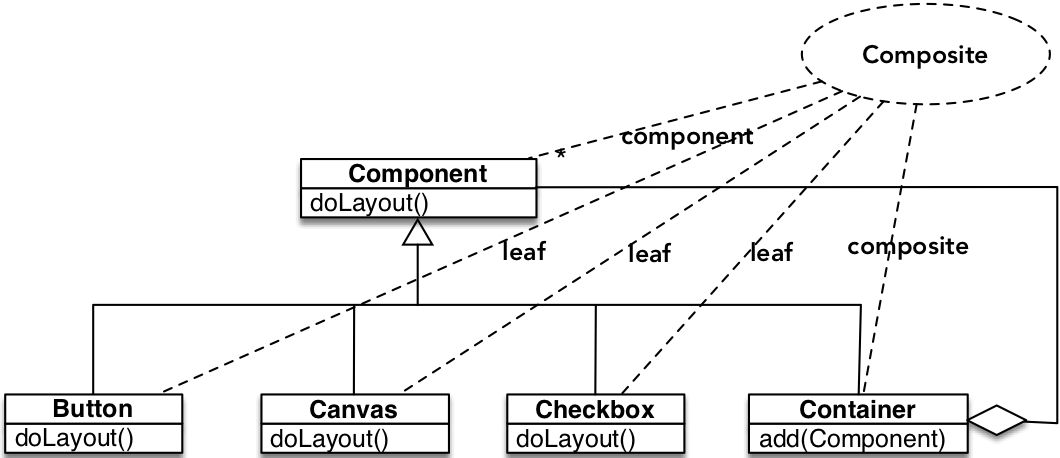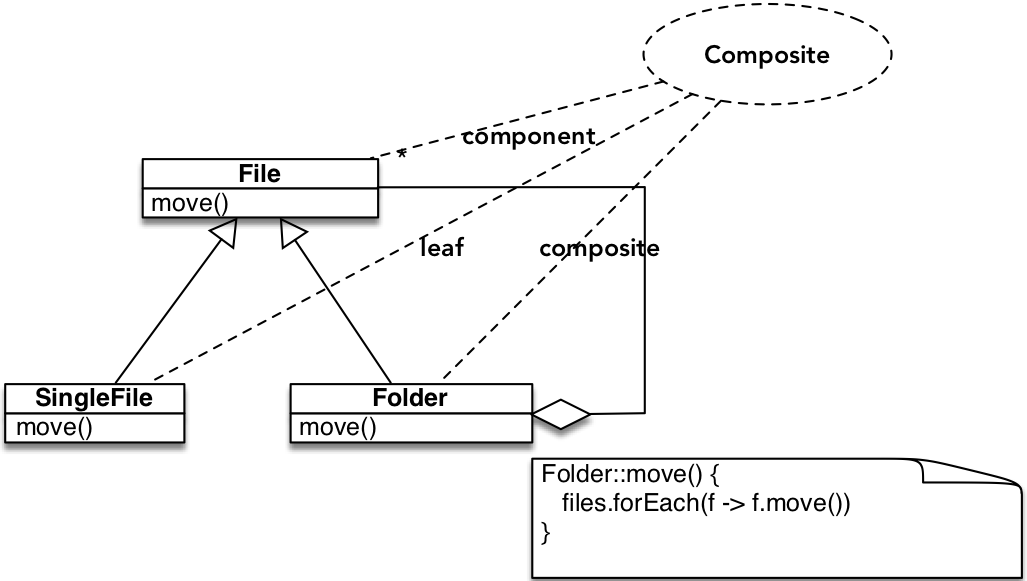In the Component class?
Possible error if not called on a Composite.
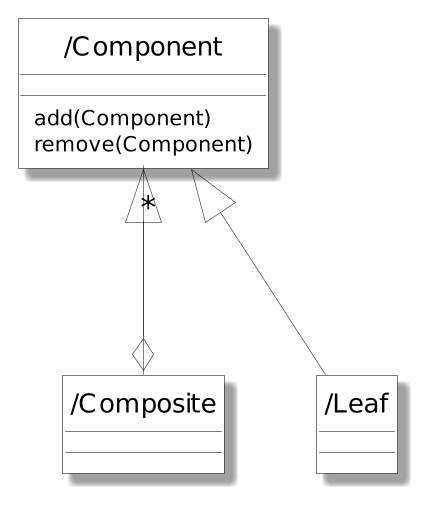
In the Composite class?
Need to type check beforehand.
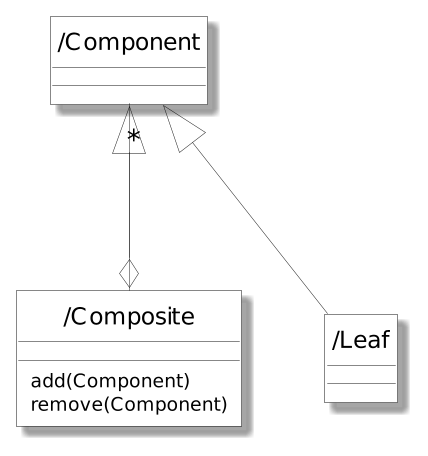
Gamma et al. 95
Compose objects into tree structures to represent part-whole hierarchies.
Let clients treat individual objects and compositions of objects uniformly.
Occasionally, some applications (e.g. graphic editor) need to deal with primitive objects and container objects, i.e., objects containing other objects.
Clients want to treat identically primitive and container objects.
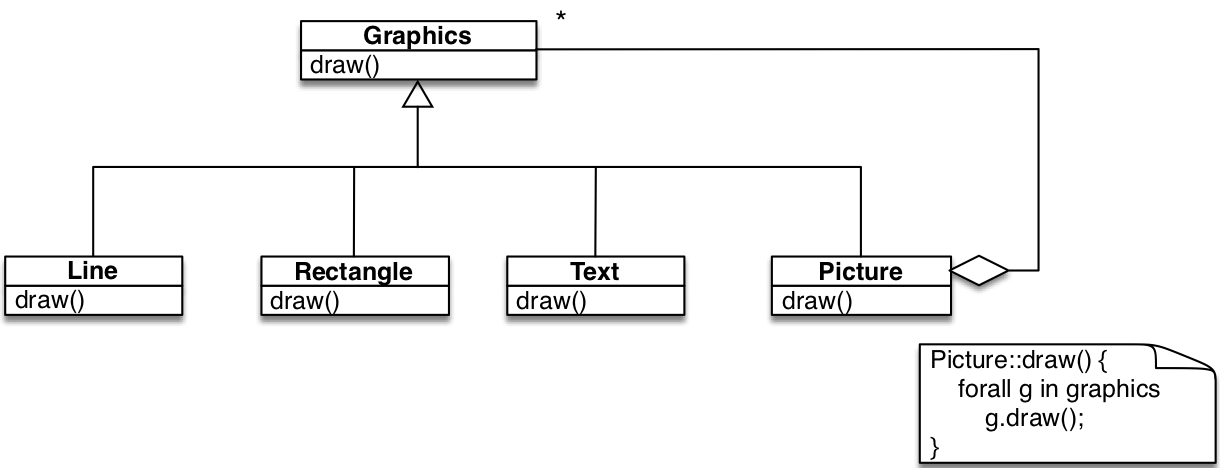
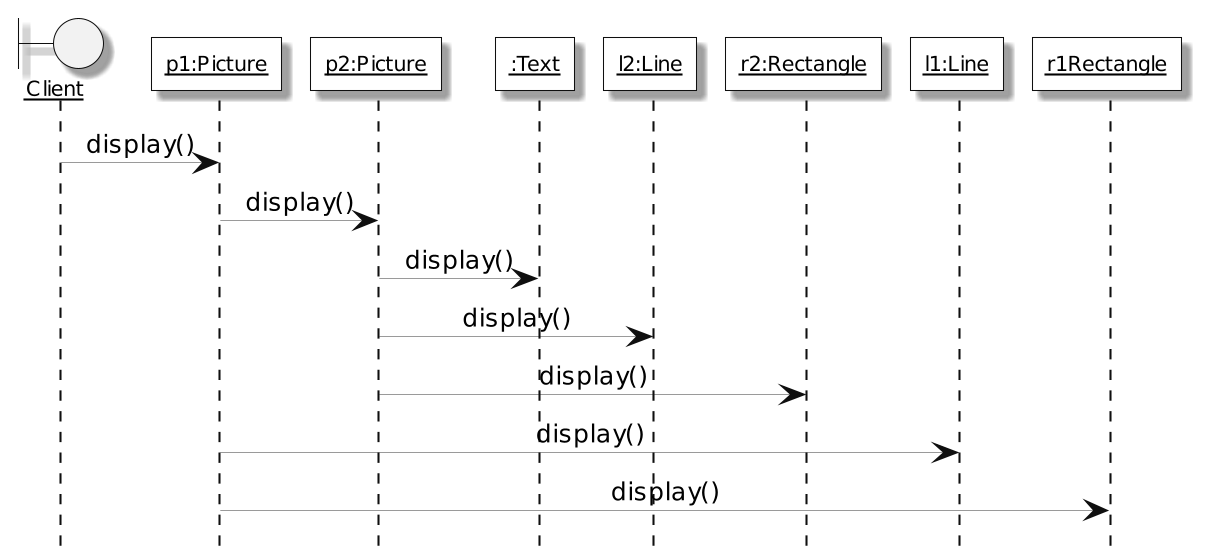
you want to represent part-whole hierarchies of objects.
you want clients to be able to ignore the difference between compositions of objects and individual objects.
Clients will treat all objects in the composite structure uniformly.
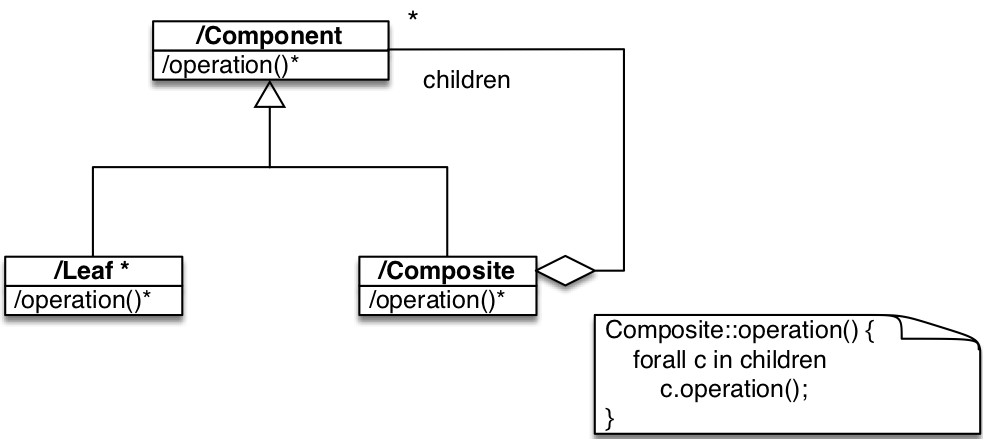
Clients treat equally composite or atomic structures.
Clients are simplified.
It is easy to add new components.
The solution is sometimes too general (composite accepts any component).
Explicit reference to the parent: sometimes the Component may need to know the Composite that contains it (if any).
Sharing components: sometimes a Component may be possessed by multiple Composites − can influence the behavior or the destruction of Composites.
Where to define operations to add/remove components?:
Possible error if not called on a Composite.

Need to type check beforehand.

The Composite may contain a cache to store information on the sum of components it contains.
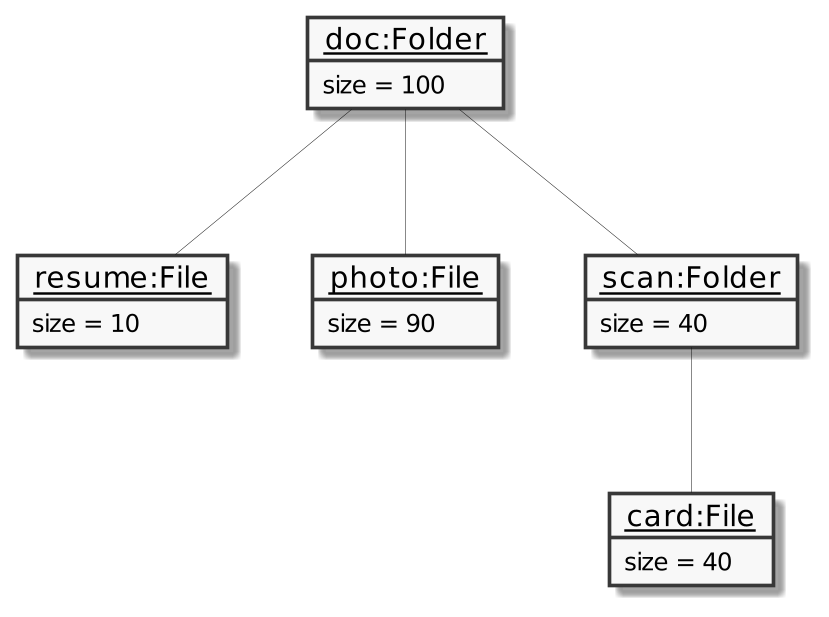
Design Patterns: Elements of Reusable Object-Oriented Software. Erich Gamma, Richard Helm,Ralph Johnson, and John Vlissides. Addison Wesley. October 1994.
